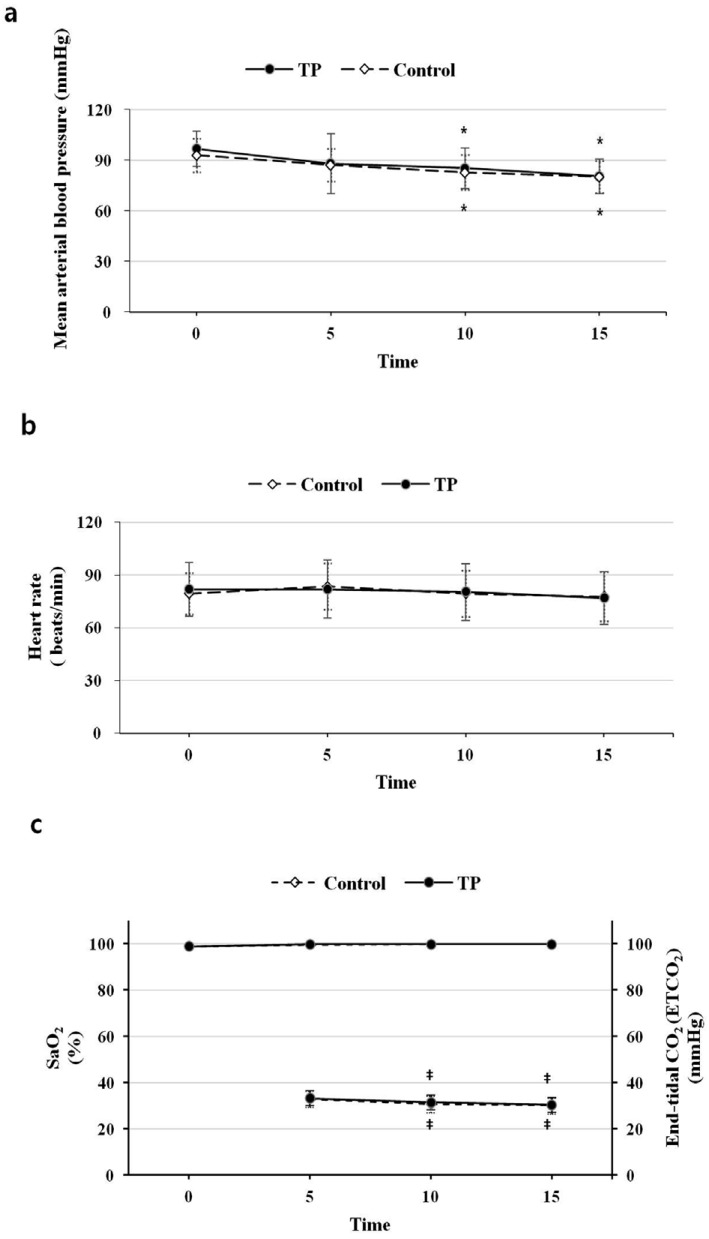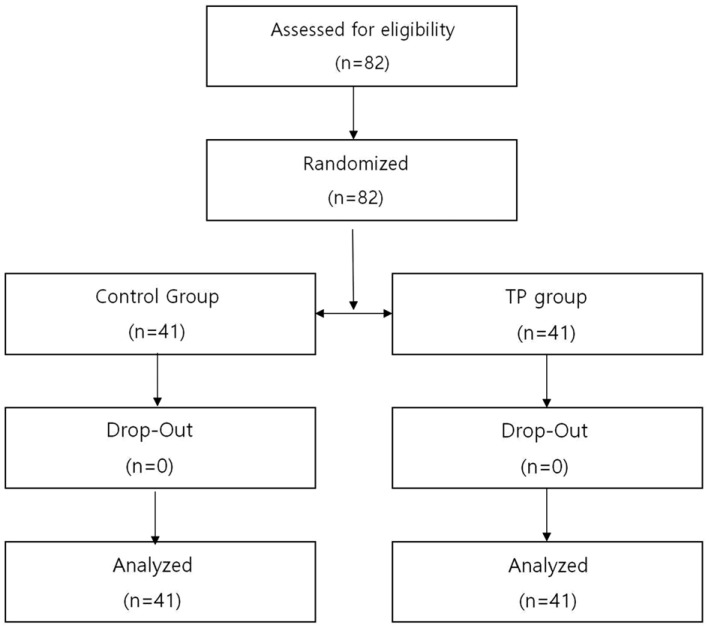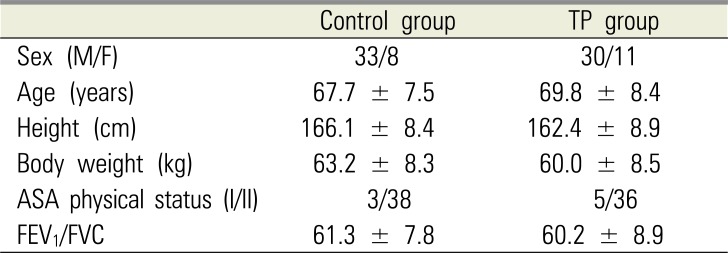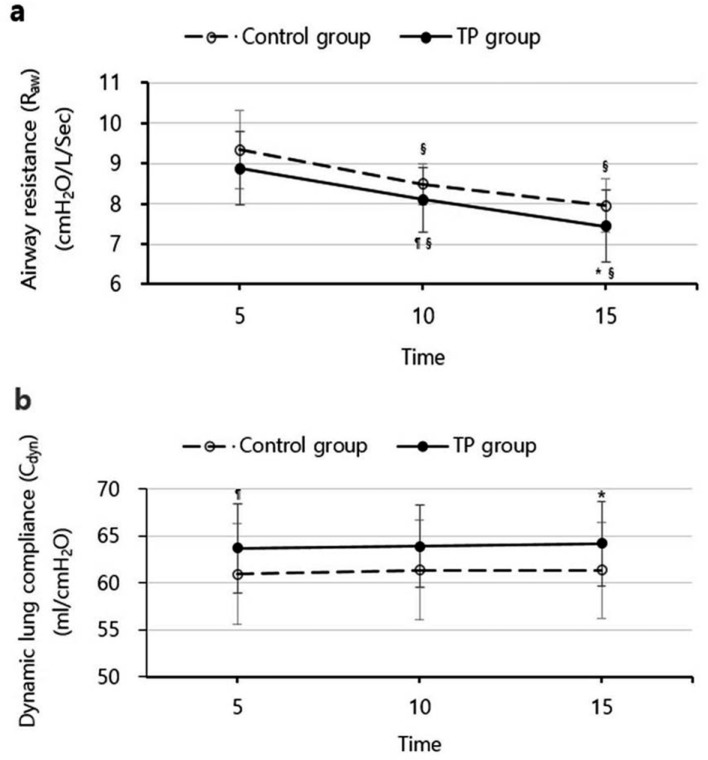1. Olsson GL. Bronchospasm during anaesthesia. A computer-aided incidence study of 136,929 patients. Acta Anaesthesiol Scand. 1987; 31:244–252. PMID:
3577646.
2. Pizov R, Brown RH, Weiss YS, Baranov D, Hennes H, Baker S, et al. Wheezing during induction of general anesthesia in patients with and without asthma. A randomized, blinded trial. Anesthesiology. 1995; 82:1111–1116. PMID:
7741285.
3. Eames WO, Rooke GA, Wu RS, Bishop MJ. Comparison of the effects of etomidate, propofol, and thiopental on respiratory resistance after tracheal intubation. Anesthesiology. 1996; 84:1307–1311. PMID:
8669670.

4. Kil HK, Rooke GA, Ryan-Dykes MA, Bishop MJ. Effect of prophylactic bronchodilator treatment on lung resistance after tracheal intubation. Anesthesiology. 1994; 81:43–48. PMID:
8042809.

5. Kim ES, Bishop MJ. Endotracheal intubation, but not laryngeal mask airway insertion, produces reversible bronchoconstriction. Anesthesiology. 1999; 90:391–394. PMID:
9952142.

6. Fukuchi Y, Nagai A, Seyama K, Nishimura M, Hirata K, Kubo K, et al. Clinical efficacy and safety of transdermal tulobuterol in the treatment of stable COPD: an open-label comparison with inhaled salmeterol. Treat Respir Med. 2005; 4:447–455. PMID:
16336029.

7. Yoshihara S, Yamada Y, Abe T, Arisaka O. The use of patch formulation of tulobuterol, a long-acting beta2-adrenoreceptor agonist, in the treatment of severe pediatric asthma. Ann Allergy Asthma Immunol. 2006; 96:879–880. PMID:
16802779.
8. Horiguchi T, Kondo R, Miyazaki J, Fukumokto K, Torigoe H. Clinical evaluation of a transdermal therapeutic system of the beta2-agonist tulobuterol in patients with mild or moderate persistent bronchial asthma. Arzneimittelforschung. 2004; 54:280–285. PMID:
15212190.
9. Burioka N, Miyata M, Endo M, Fukuoka Y, Suyama H, Nakazaki H, et al. Alteration of the circadian rhythm in peak expiratory flow of nocturnal asthma following nighttime transdermal beta2-adrenoceptor agonist tulobuterol chronotherapy. Chronobiol Int. 2005; 22:383–390. PMID:
16021849.
10. Uematsu T, Nakano M, Kosuge K, Kanamaru M, Nakashima M. The pharmacokinetics of the beta 2-adrenoceptor agonist, tulobuterol, given transdermally and by inhalation. Eur J Clin Pharmacol. 1993; 44:361–364. PMID:
8099880.
11. Iikura Y, Uchiyama H, Akimoto K, Ebisawa M, Sakaguchi N, Tsubaki T, et al. Pharmacokinetics and pharmacodynamics of the tulobuterol patch, HN-078, in childhood asthma. Ann Allergy Asthma Immunol. 1995; 74:147–151. PMID:
7697473.
12. Pauwels RA, Buist AS, Calverley PM, Jenkins CR, Hurd SS. GOLD Scientific Committee. Global strategy for the diagnosis, management, and prevention of chronic obstructive pulmonary disease. NHLBI/WHO Global Initiative for Chronic Obstructive Lung Disease (GOLD) Workshop summary. Am J Respir Crit Care Med. 2001; 163:1256–1276. PMID:
11316667.
13. Hepner DL, Castells MC. Anaphylaxis during the perioperative period. Anesth Analg. 2003; 97:1381–1395. PMID:
14570656.

14. Postma DS, Kerstjens HA. Characteristics of airway hyperresponsiveness in asthma and chronic obstructive pulmonary disease. Am J Respir Crit Care Med. 1998; 158:S187–S192. PMID:
9817744.

15. Wajima Z, Shiga T, Imanaga K, Inoue T, Ogawa R. Effect of prophylactic bronchodilator treatment with i.v. carperitide on airway resistance and lung compliance after tracheal intubation. Br J Anaesth. 2006; 96:660–664. PMID:
16531446.

16. Rooke GA, Choi JH, Bishop MJ. The effect of isoflurane, halothane, sevoflurane, and thiopental/nitrous oxide on respiratory system resistance after tracheal intubation. Anesthesiology. 1997; 86:1294–1299. PMID:
9197298.

17. Goff MJ, Arain SR, Ficke DJ, Uhrich TD, Ebert TJ. Absence of bronchodilation during desflurane anesthesia: a comparison to sevoflurane and thiopental. Anesthesiology. 2000; 93:404–408. PMID:
10910489.
18. Kabara S, Hirota K, Yoshioka H, Kudo T, Ishihara H, Matsuki A. Differential effects of thiopental on methacholine- and serotonin-induced bronchoconstriction in dogs. Br J Anaesth. 2003; 91:379–384. PMID:
12925478.
19. Nishiyama T, Hanaoka K. Propofol-induced bronchoconstriction: two case reports. Anesth Analg. 2001; 93:645–646. PMID:
11524333.

20. Sparr HJ, Beaufort TM, Fuchs-Buder T. Newer neuromuscular blocking agents: how do they compare with established agents? Drugs. 2001; 61:919–942. PMID:
11434449.
21. Kume H, Kondo M, Ito Y, Suzuki R, Yamaki K, Takagi K. Effects of sustained-release tulobuterol on asthma control and beta-adrenoceptor function. Clin Exp Pharmacol Physiol. 2002; 29:1076–1083. PMID:
12390295.

22. Musoh K, Kawamura K, Miyake I, Shimada S, Ohashi T, Iwanaga Y, et al. The effect of tulobuterol tape on histamine-induced bronchoconstriction in conscious guinea pigs: long duration of action. Jpn J Pharmacol. 1999; 79:401–402. PMID:
10230871.
23. Leff AR. Identifying patients at risk from the use of beta-adrenergic agonists. Am J Respir Crit Care Med. 1996; 154:1593. PMID:
8970339.

24. Suissa S, Hemmelgarn B, Blais L, Ernst P. Bronchodilators and acute cardiac death. Am J Respir Crit Care Med. 1996; 154:1598–1602. PMID:
8970341.

25. Wong CS, Pavord ID, Williams J, Britton JR, Tattersfield AE. Bronchodilator, cardiovascular, and hypokalaemic effects of fenoterol, salbutamol, and terbutaline in asthma. Lancet. 1990; 336:1396–1399. PMID:
1978872.






 PDF
PDF ePub
ePub Citation
Citation Print
Print






 XML Download
XML Download